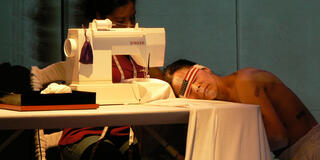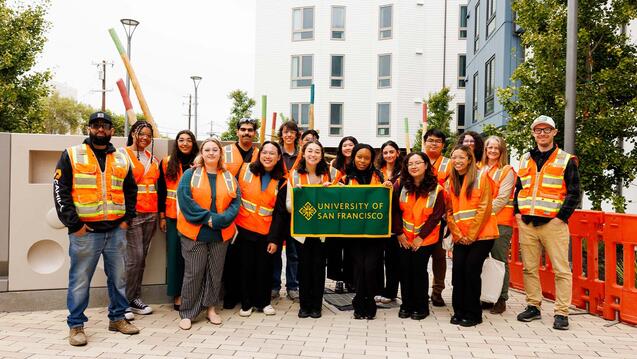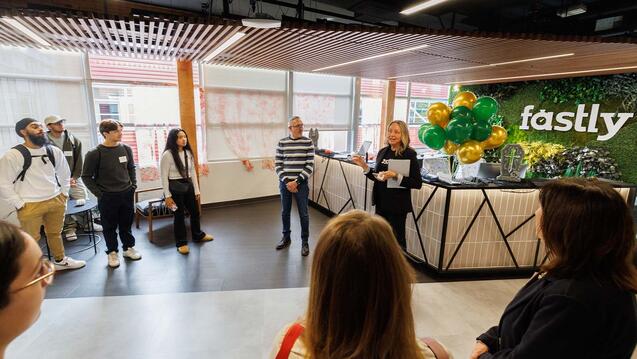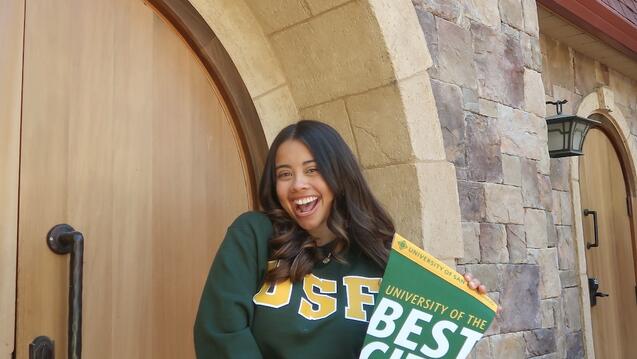Creative Capital for USF Artists

Two University of San Francisco art professors have been chosen as 2009 Creative Capital grant winners for their work breaking down barriers and raising awareness.
Amy Franceschini, assistant professor of visual arts, and Roberto Gutierrez Varea, associate professor and chair of performing arts, have each been award multi-year grants from Creative Capital, a national nonprofit that supports and funds adventurous and imaginative artists in the performing and visual arts, film or video, innovative literature, and other emerging fields.
“The Creative Capital award is much more than the financial support. This group offers professional support and access to a network of other funders, publishers, fellowships, and publicity,” said Franceschini. “This is something that is priceless.”
Franceschini is working with San Francisco’s Exploratorium on a plan to install urine-capturing receptacles in the museum’s bathrooms, for the first of a three-part art series titled “Local Landscape Campus.” The captured urine will be used to water and fertilize a garden installation at the museum to illustrate the possibilities of recycling.
“It is a cross-disciplinary research and social critique, focusing on how humans create, interact with, and impact the world they inhabit,” Franceschini said.
Prior to installation, the urine-capturing receptacles project, known separately as the “Renewable Energy Laboratory,” will involve researching existing and historical urine harvesting systems, and developing exhibition and educational materials, which Franceschini intends to involve USF students in.
The big hurdle will be overcoming the negative social perception of urine collection, Franceschini said. “It is safe and healthy,” she said. “In Sweden, for example, farmers use direct urine on their cabbage crops and this cabbage has been some of the easiest to grow, nutrient rich, and pest tolerant.”
From breaking down public perceptions surrounding waste and recycling to those of borders and immigration politics, Gutierrez Varea will use his grant to fund a trilogy of performance pieces on one Latin American immigrant’s journey to the United States and subsequent search for work.
As part of the San Francisco-based performance collective Secos & Mojados, the majority of whose members are immigrants or the children of immigrants to the United States, Varea has begun work on a series dubbed “BORDER TRIP(tych)/TRIP(tico) de la frontera.”
“Performance reminds the audience of the web of interpersonal relationships by making these visible on stage,” Varea said. “We are less likely to dismiss the ‘other,’ if we are made to see the intricate web of inter-connectedness that exists between the migrant, their labor, and our lives.”
Unlike most performance pieces, the 90-minute trilogy will be developed over several months with immigrant and nonimmigrant audience interactions as part of the process. Each piece will then be edited and re-edited with the audiences input in mind, Varea said.
“Inspired by our heritage and our work with migrant workers, we decided to develop Secos & Mojados as an experiment where, as immigrant artists, we would assume not only the development of contextual frameworks (as in our community-based work) but also of our own expressive content,” Varea said.
Essential to the concept of “BORDER TRIP(tych)/TRIP(tico) de la frontera” is that while much is being written and said about immigrants and immigration policy in the United States these days, it’s very rare that immigrants themselves are allowed to self-define their identity boundaries in a public forum, Varea said.


